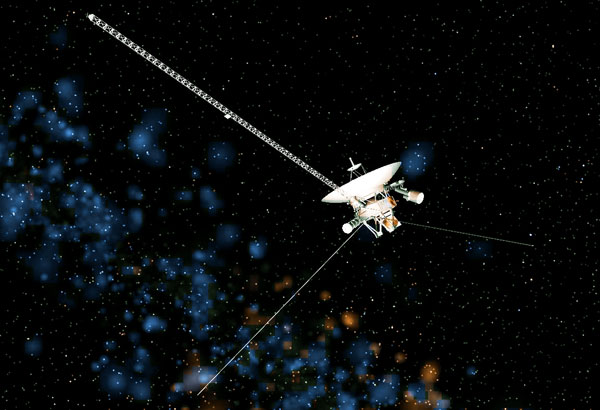Voyager 1 is about to
After 35 years of operation in the universe, the Voyager 1 explorer ship of the US Aerospace Agency (NASA) is slowly crossing the boundary of the solar system to enter a new world - interstellar space.
>>>Video simulation of Voyager 1 position
At the time of the two NASA expedition ships - Voyager 1 and Voyager 2 were first launched into space in 1977, no one was quite sure about the operating time of these two spacecraft in the state of extreme engraving harsh.
Now, however, they are becoming the longest-running spacecraft in history and operating the farthest away from Earth (billions of miles away from Earth).
Today (September 5) is the 35th anniversary of the launch of Voyager 1 explorer ship on Jupiter and Saturn. The ship also completed its journey around the boundaries of the solar system, which is made up of a giant bubble containing plasma material streams. The flow of charged particles scattered from the Sun is the cause of this highly variable and extremely hot bubble.

Voyager 1 is expected to be the first artificial object to exit the solar system in the near future
Outside the bubble is a 'new horizon' in the galaxy - the space between stars or interstellar space. When the Voyager 1 exploded out of the area, the scientists hoped it would be a quieter environment than the area inside the solar system.
However, Voyager 1 is taking on an extremely difficult task - exploring the unprecedented universe. One thing is for sure, the boundary separating the solar system and interstellar space is very close, but the journey to cross this boundary can last many days, even months and many years.
While the Voyager 1 is currently more than 11 billion miles from the Sun, the twin brother, Voyager 2, is operating in the area 9 billion miles from the Sun.
The initial objective of the Voyager 2 spacecraft is to make the journey around Saturn and Jupiter. They have sent valuable information to Earth such as the discovery of Jupiter's moon eruption Io; traces of the appearance of an ocean beneath the ice surface of Europa - another moon of Jupiter; and signs of methane rain on Saturn's moon Titan.
Later, the Voyager 2 expedition ship continued its flight to Uranus and Neptune. So far, Voyager 2 has been registered as the only explorer ship flying around the two outer planets. Meanwhile, Voyager 1 uses Jupiter as a launch pad towards the solar system's boundary area.
Since 2004, the Voyager 1 mission has moved to explore the area inside the bubble formed in the solar system's boundary - where the Sun's wind blows with extremely slow speed and dispersal. hot air around.
If Voyager 1 fulfills its mission to cross the Solar System to successfully reach interstellar space, it will become the first spacecraft in human history to explore the space between stars.
Although in the past few years, two giant space telescopes like Hubble and Spitzer have also conducted observations on solar system activity, but these two devices have mainly focused on studying distant galaxies.
According to experts, the cost of Voyager 1 and Voyager 2 missions in 1977 was 983 million USD, equivalent to 3.7 billion USD today. In addition, 2 ships are equipped with fuel with the ability to operate until 2020.
- Voyager 2 overview
- Voyager 1 overview
- Voyager crossed the solar system
- Voyager's controversy
- Voyager 1 touch lane
- Voyager 2 leaves the Solar System, enters the interstellar realm
- Voyager 1 was out of the solar system
- People are about to leave the Solar System
- NASA wakes up the engine
- Voyager 1: The spacecraft is farthest away from Earth
- The American spacecraft exits the solar system
- The American airship is about to fly out of the solar system
 Van Allen's belt and evidence that the Apollo 11 mission to the Moon was myth
Van Allen's belt and evidence that the Apollo 11 mission to the Moon was myth The levels of civilization in the universe (Kardashev scale)
The levels of civilization in the universe (Kardashev scale) Today Mars, the sun and the Earth are aligned
Today Mars, the sun and the Earth are aligned The Amazon owner announced a secret plan to build a space base for thousands of people
The Amazon owner announced a secret plan to build a space base for thousands of people